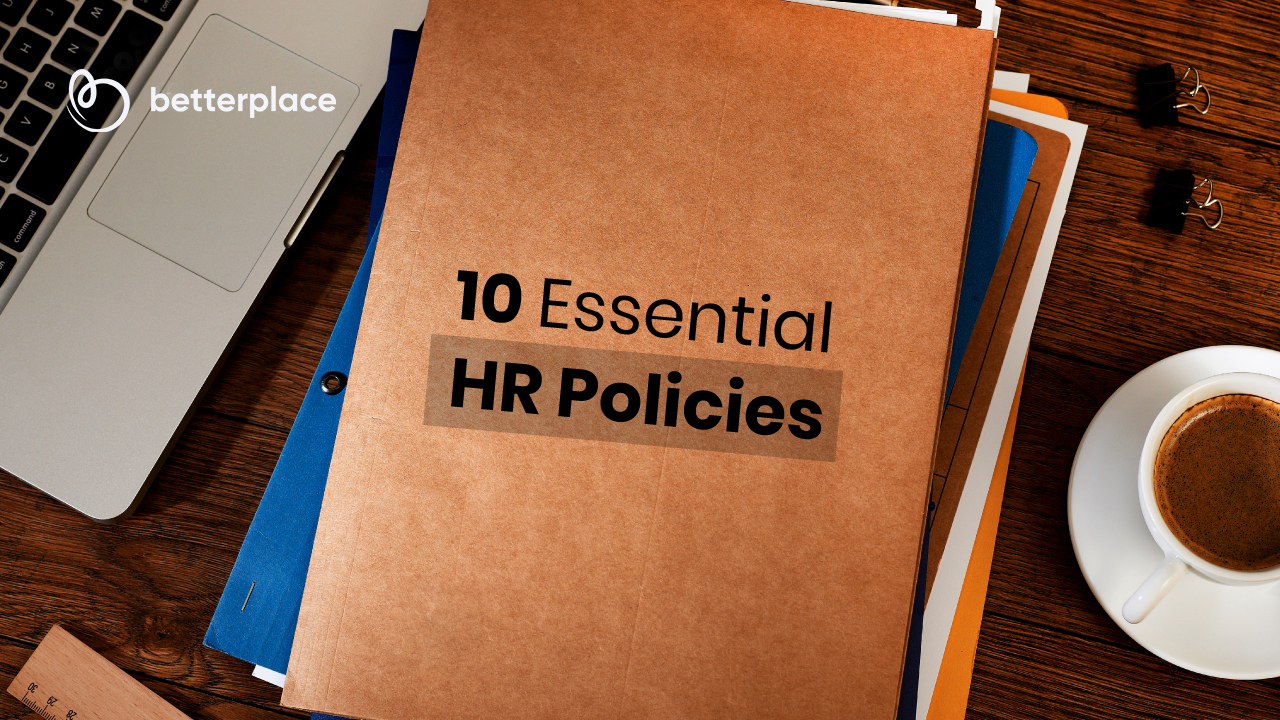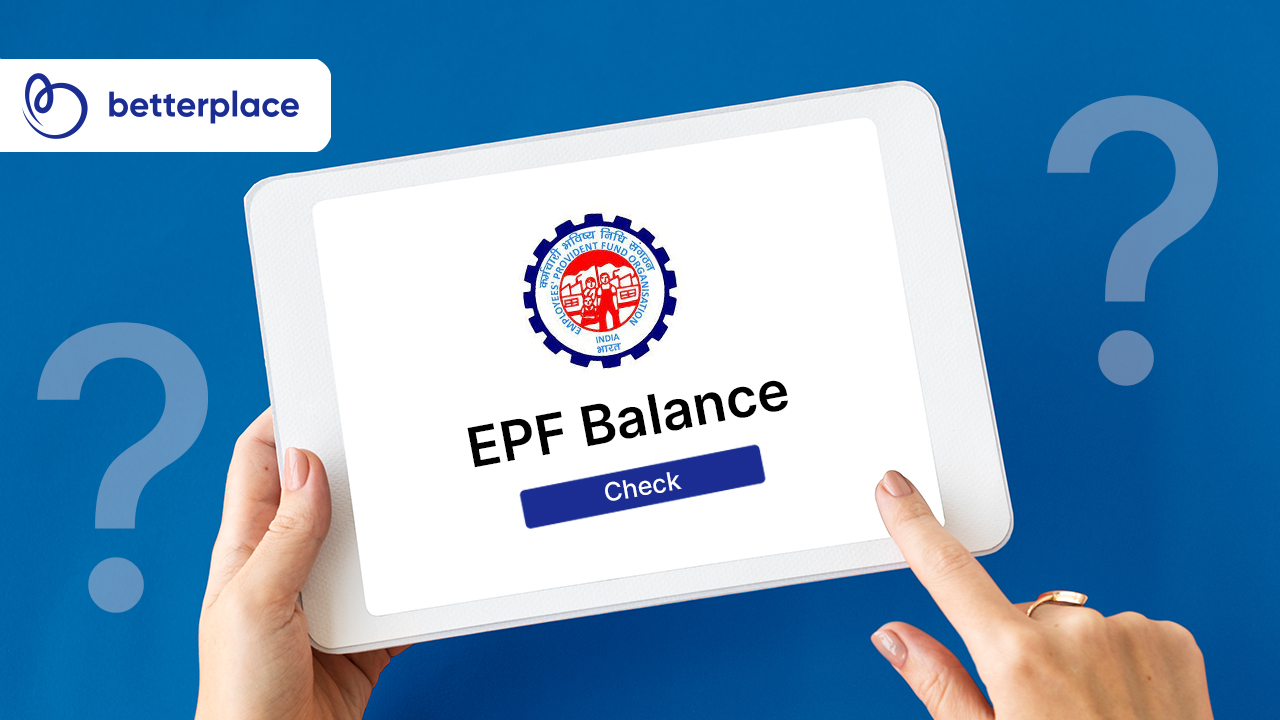The primary purpose of HR policies is to manage employees more productively and ensure the organisation’s smooth functioning. The inclusion of HR policies creates a base or a solid foundation for companies to manage and lead their employees towards growth and prosperity. It also saves the company from any legal compliance issues in case of a lawsuit filed by any of the employees.
What are HR policies?
HR strategies are also described as the set of concepts and norms of behaviour that regulate an organisation’s interaction with its workers. A policy proposal of this type sets instructions for a broad range of employment connections inside the business. The aim and relevance of HR rules are self-evident. Every firm needs policies in order to promote regularity in behaviour and equality in employee relations.
Why Is It Important to Have Defined HR Policies in Place?
HR Department Policies and Practices are critical in SMEs because they give an outline, management, uniformity, justice, and rationality. They also guarantee that employment laws are followed and that workers are aware of their obligations and the Business’s goals.
In this blog, we discuss the 10 top HR policies in India that every company should consider.
1. Employment contract
In India, it is crucial to file proper documentation of the employees that work in the company. The employee contract acts as the umbrella covering a list of HR policies and agreements.
As per India’s employment laws, it is essential to file proper documentation of the employees to ensure appropriate navigation through the complex and diverse employment framework.
Therefore, having accurate and updated documents that prove the employee’s compliance to the company will help in the long term and save them from any legal hassles later. Therefore, you need to follow the labour and wage laws while processing documentation.
2. Employee wages
Employee payroll is one of the significant aspects of employee management. The job of the HR department of the company is to manage the employee payroll effectively. This includes offering competitive salaries to employees and staying in compliance with the government policies.
Various acts passed by the government cover the employee wages. The most prominent among being The Minimum Wage Act, 1948. This act sets a particular wage as the minimum wage for skilled as well as unskilled workers. The act mandates that the employees earn the ‘Basic’ salary to meet their living expenses.
Further, The Payment of Wages Act, 1936 states that an employee should receive their rightful monthly salary payment on the agreed-upon date without any unwanted deductions. Therefore, companies need to follow the laws to remain compliant while being competitive. This is one of the most critical points in the list of HR policies in India.
3. Code of Conduct
The Code of Conduct is the company’s policies, consisting of its vision, mission, and ethics. This is created to inform employees about the policies of the behaviour and maintain discipline while at the workplace.
The code of conduct is among the types of HR policies containing the company’s rules that employees need to adhere to. The policy includes dress code, equal rights to all, electronic usage policy, conflict of interest, media policy, proper work environment etc. It also contains the rules and penalties if an employee breaches or violates the code of conduct.
4. Leave policy
As per requirement, every company should have a good leave policy to provide a clear picture of the leaves they would be entitled to take in a year. The policy should include a proper bifurcation of the leaves into paid leaves, sick leaves or casual leaves etc. It must also mention public holidays.
HR policies in India 2023 should also provide provision for unpaid leaves along with detailed rules on the salary cut on late arrivals and half days. According to The Factories Act, 1948, employees are entitled to get paid holidays every week as well as get paid for any extra work they did beyond their work hours.
5. Employee provident fund
Every employer is liable to set up an employees provident fund account for each of its employees. The Employees Provident Fund Act, 1947 provides income security to the employees after their retirement. This is more like a security fund offering various benefits for employees, such as housing care, medical insurance and retirement pension.
It is important to note that companies exceeding 10 employees must provide provident fund benefits to their employees. Therefore, if you have more than 10 employees, then you are liable to have a provident fund scheme for your employees.
6. Gratuity Policy
The gratuity policy is a way for companies to appreciate the services provided by their employees towards the company. The gratuity policy applies to all employees who have provided more than 5 years of continuous service to the organisation.
The company is liable to pay a one-time payment as gratuity payout to employees who are either being laid off or resigning, but have provided 5 years or more of continuous service. This is vital to keeping employees happy and engaged. Moreover, companies are legally bound, as per The Payment of Gratuity Act, 1972, to pay gratuity to their employees.
7. Paternity and maternity leave policy
Every company with more than 10 employees is required by law to provide maternity leave benefits to women employees as per The Maternity Benefits (Amendment) Act, 2017. Any woman who has worked with the company for 80 days is entitled to receive the benefits.
According to the act, a pregnant working woman is eligible to get a minimum of 26 weeks of paid leave for the first 2 children and a subsequent 12 weeks of unpaid leave.
As of now, there is no law on paternity bills for private company employees. The central government employees are entitled to get paternity leave of 15 days to take care of their wife and surviving child. There is a proposed paternity benefits bill, 2017, which is still pending government authorisation.
8. Sexual harassment workplace policy
A company is required to take or implement decisive rules, human resource policies and regulations to create a safe work ecosystem for women at the workplace. This is not just required by law, but it should be a moral necessity for the company.
According to The Sexual Harassment Act, 2013, the company must implement proper steps to protect women employees and interns as well as any woman who visits the company. Moreover, every company should have a sound sexual harassment policy to address harassment complaints by women employees actively.
This includes setting up an Internal Complaints Committee in every company crossing the 10-employee mark to look into the sexual harassment complaints by women at the workplace.
9. Adaptive work culture policy
The past year has seen a paradigm shift in various companies’ work culture. The pandemic has forced many of them to ask their employees to work from home. This has given rise to the need for an adaptive work culture policy to provide greater flexibility to employees to choose their work location or workplace.
The adaptive work culture policy should contain proper rules and structures to manage employees working remotely or working from home. This will create a framework or guidelines for employees to follow when working from different locations.
10. Employment Termination policy
Every employer has to face it. Some of your employees may plan to move ahead at some point in their careers. You may also feel that an employee no more fits into your larger scheme of things. These moments are emotional for the employee as well as the employer.
Therefore, the employer needs to ensure that they implement a proper leave policy that lays down the steps for an employee who wishes to leave the company.
This will help the HR team follow the correct procedures as per the labour laws to terminate an employee or process the employee’s resignation request.
HR policies are an essential framework that every company needs to ensure smooth functioning. These policies are the guiding factor that tells the company and the employees how to work and conduct themselves to ensure a safe and secure working environment for all.
Employee termination letter samples: https://www.betterplace.co.in/blog/employee-termination-letter-samples/
11. Developing relations
Google renamed the normal ‘Human Resources’ division to ‘People Operations,’ wherein management holds that in developing strong relationships between employers and employees. The organization enables its staff to use their creativity and keep coming up with great out-of-the-box ideas and value-added activities.
12. Looking after the employees
Flipkart is one of the largest electronic retail giants and provides its employees with unpaid time off to attend to personal commitments. The organization also offers exceptional discounts for special occasions such as an emergency involving friends or relatives. These benefits are in addition to the standard leaves that are awarded.
The Right Way To Write HR Policies
If your HR team has to draft an HR policy, certain precautions have to be taken. Why? Because the last thing you want is a botched official document of your organisation that lays down important rules, regulations and procedures for everyone.
Needless to say, an unclear document riddled with errors will eventually make your HR team look bad in front of all the employees, especially the leadership team.
So, how do you get it right? Here’s how you should go about it.
Precaution #1 Get the HR policy title spot on
Every HR policy document has a title that summarises the contents of the document in the most simple manner.
Before your HR team even begins drafting the contents of the policy, they should find a suitable title because it will set the tone and the context for the rest of the HR processes and procedures. Since your HR policy ties several processes together, an apt policy title will assist employees in identifying and referring to particular processes.
Generally speaking, your policy title must be able to answer some basic questions. For instance, the user-friendliness of the policy, whether the title describes the entire policy, how much it can assist the reader, and if employees, old or new, can comprehend the title.
Precaution #2 Know why you need HR policies
Understanding the real motive behind creating HR policies is important. In other words, what is it that you want to achieve when writing HR policies?
The simple answer — addressing the questions and doubts of employees without any hassles. They should be able to look up the policy document and specific points mentioned within. In this regard, it’s crucial to outline the intentions of the company and the HR.
Precaution #3 Keep it crisp and clear
When creating the HR policy document, you should be absolutely clear about the language. Do you think whatever you’ve mentioned in the document can be understood clearly by the reader? Can they comprehend the message you want to convey?
IF not, then your team has to go back to the drawing board and simplify the language. It should be clear, concise, and simple. Every procedure or process must be explained in elementary fashion. As a rule of thumb, you should stay away from using industry jargon. While there may be times where you cannot avoid jargon, you should try your best to spell every word, process, or procedure in the most simplest manner.
Precaution #4 Sound the alarm in your HR policy wordings
Your HR policies should apply to all employees, even for the leadership team. And that is why your policy statement must underline all the rules and regulations. Not just that, you should follow them up with repercussions, in case rules aren’t obeyed or employees try to circumvent the same.
While you may not need to define the exact actions that will be taken in the event of HR policy terms and conditions not being followed, you can definitely throw in reminders at intervals about the idea of reward and punishment.
Precaution #5 Chalk out the outline
HR policies for your company must be clearly outlined. And what this means is that the specific guidelines and procedures should be broken down into steps so that call employees can follow and understand them.
Your HR team must also look into explaining the effect an HR policy has on the brand’s reputation, and how it aligns with the work culture and the organisational goals and objectives.
Precaution #6 Uncomplicate the complicated
Understand one thing, HR policies can be downright confusing and difficult to follow. Which is why your team should be absolutely sure that the policy is written well. And every little policy and rule contained within the policy must be clearly defined.
For instance, you must provide references for policies that aren’t clear. Your readers will try to understand the true meaning behind every small detail in the HR policy.
Save them the trouble. Make your intentions loud and clear from the get-go. While you’re doing that, ensure that the tone and voice you adopt for the HR policy suits the organisation’s environment and work culture.
Precaution #7 The final few steps
Now that your HR policy has finally taken shape, you shouldn’t pull the trigger and finalise it no matter how desperately you need it.
Since this is the final draft, you should read your policy, then re-read it to oust and rectify any errors. You need to provide clarity on every little detail and take care of any omissions before the final draft is finalised.
Precaution #8 Get additional help
The HR policy written by you or by the HR team under your supervision might still have many errors that may go unnoticed. While it may look good to you, don’t jump the gun and have it finalised.
Get help. Someone within the organisation, preferably from the leadership team, who has vast amounts of experience may still have something to say. Share your HR policy with such professionals for additional feedback and comments.
This step will help you fine-tune your HR policy. They can help you illustrate the HR policy better. What’s more, if there’s anything important you’ve missed out, they’ll be quick to let you know.
Precaution #9 Testing it on others
You need to build confidence before submitting the final HR policy for your organisations. That is why it’s a great idea to share it with other members of the HR team and senior executives from other departments.
They’ll be able to tell you if they have any reservations about the HR policy. Send in an official request, perhaps via mail, asking them for their inputs.
Precaution #10 The policy must adapt
The underlying fact about an official document such as the HR policy is that they’re bound to change. Business decisions, crises such as the ongoing pandemic, market and work trends will all influence the policies and procedures to some degree.
What this essentially means is that your HR policy must not be set in stone. Keep some room for the policy to change and adapt. In fact, you should slip in a disclaimer, clearly announcing that the HR policy is subject to change as per organisational needs.
One HR Policy, Many Benefits
An HR policy acts as a guidebook, not just for your HR team, but also for the entire organisation. But that isn’t the only advantage of having one. Let’s take a look at some of the other benefits of having a sound HR policy in place for your organisation.
Benefit #1 Quick actions
There’s no way to predict crises. But decisions have to be made, quickly. When that happens, an HR policy will serve as the guide and help concerned teams and departments to act quickly. Such actions will be governed by the principles and rules contained in the HR policy.
Benefit #2 A stable future
Your’s is an organisation like any other. What that means is that employees will come and go. That is why you need HR policies that govern decision making, now and in the future. An HR policy will ensure that correct decisions are always taken even when loyal and core members leave the organisation.
Benefit #3 Better decisions
While your organisation encourages help and support amongst employees, there’s no saying whether they’ll be able to help each other out even if they want to. Why? Because those willing to help might actually be away or be engrossed in other tasks.
In such cases, an HR policy can help by empowering employees, managers, supervisors and leaders to make decisions with confidence without consulting others. Policy helps managers at various levels to act with confidence without the need of consulting the s every time.
Benefit #4 No special treatment
As mentioned earlier, a single HR policy document must govern each and every employee of the company, regardless of their designation, experience, or seniority.
What this means is that all employees must be treated equally and fairly. When you have a sound HR policy, it’ll act as the official guide for consistent and unbiased treatment.
Benefit #5 Clean conscience
An HR policy can aid decision-making. For instance, when you spell out all the rules and regulations in a single document and share it with all employees, they don’t have to consult someone or look elsewhere when making decisions.
Any feelings of self-interest and bias, conscious or not, will be eradicated.
Benefit #6 Employee confidence
An HR policy can help the employees understand their position within the organisation. Once this happens, you instil confidence in them. They feel noticed. Which only means better decisions and enhanced employee loyalty.
Benefit #7 Result-oriented and rational
This is your company after all, and you want to ensure that the best decisions are being made all the time. While every problem-solver within your company has a unique way of overcoming odds, the HR policy will, in a way, underline how the entire system has to be ethical and rational.
Once you have a system for achieving results, you end up having more control over your organisation and employees.
Benefit #8 Employee-focused
Employees, at the end of the day, are the most essential resources for any company. You need to keep them happy, satisfied, and looked after.
Without HR policies, you may end up hurting the sentiments of your people which will only end up hurting your organisation’s reputation. But when you do have an HR policy, you avoid errors and bad decision-making.
In other words, the welfare of your people and their families will be prioritised at every twist and turn. Do this and your organisation will be rewarded with greater employee retention, enhanced loyalty, improved employee engagement, productivity.
You will eventually attract more talent and have an edge over your competitors when looking for the best employees because your good and fair treatment of them will be all there for the world to see.
Supporting HR Policies With HR Software
HR policies are an integral part of any organization’s functioning. These policies outline the rules and regulations governing employee behavior, performance, and benefits. However, managing these policies can be challenging, especially for large organizations. HR software can assist in the effective management of HR policies.
HR software can help streamline policy management by centralizing all policies in one place. This makes it easier for HR managers to access policies and ensure employees comply. The software can also automate policy updates, ensuring all employees know of any policy changes.
HR software can also help monitor policy compliance by providing real-time data on employee behavior. This allows HR managers identify areas where policies are being violated and take corrective action. Additionally, the software can generate reports on policy compliance, which can be used to identify trends and make informed decisions.
Moreover, HR software can simplify the process of policy enforcement by automating tasks such as policy acknowledgements, reminders, and training. This ensures that all employees know the policies and understand their importance.
In conclusion, HR software has become an indispensable tool for modern organizations to support their HR policies effectively. With the help of HR software, organizations can streamline their HR processes, automate repetitive tasks, improve data accuracy and accessibility, and enhance their overall HR management.
FAQ’s
1. Are there any HR policies and forms that are must-haves for any company?
Yes, here are a few that should be prioritised at any cost.
- Dress code policy
- Leave policy
- Claim reimbursement policy
- Advance salary policy
- Policy for performance management
- Employee rewards and recognition policy
- Timesheet management policy
- Business travel policy
- Time and attendance policy
2. What are some of the advantages of human resource policies?
- Employee expectations and aligning them with their career objectives
- Healthy and safe working environment for all employees
- Better and faster decision-making process
- Transparent communication of employment terms and conditions
- Unbiased and fair treatment of all employees
- Legal protection and immunity for your company and employees
- Settlement of employee disputes and grievances
3. What are some of the other aspects of human resource management that are covered by HR policies?
- Recruitment
- Termination
- Overtime compensation
- Vacation
- Performance evaluation
- Dress code
- Personal leaves and sick days
4. What are some of the other HR policies that are massively trending across organisations?
- Zero Tolerance For Workplace Violence Policy
- Data Security and Confidentiality Policy
- Gender Bias and Sexual Harassment Policy
- Remote or Hybrid Working Policy
- No Drug and Zero Alcohol Consumption Policy
- Bring Your Own Device/Equipment Policy
5. HR policies provide instructions on which aspects?
In short, HR policies help with:
- Communicating what decisions can be made, by whom, and how
- Understanding what to do and what not to do when fulfilling job obligations
- Defining the limitations of what’s possible and what’s not within the company









